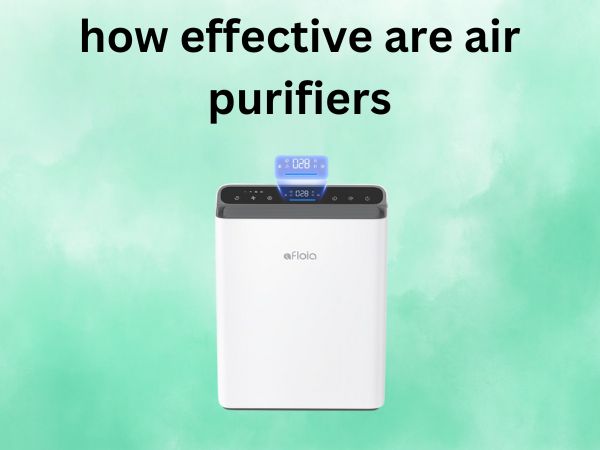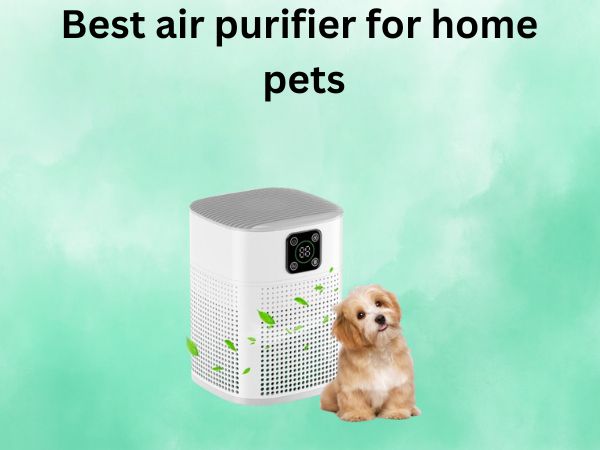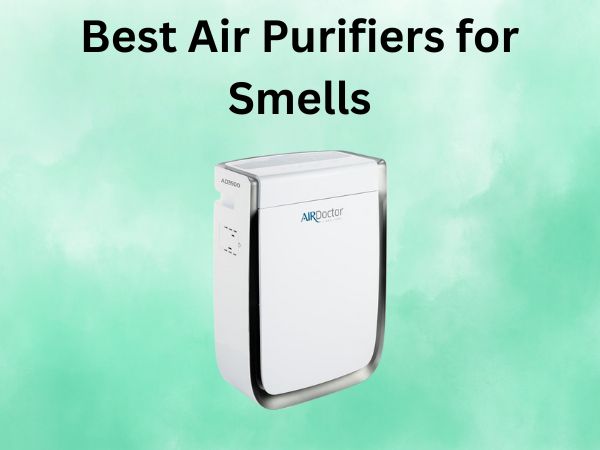5 Best Air Purifiers for 3D Printing Room [In 2026]
Are you a 3D printing enthusiast who’s concerned about breathing in potentially harmful particles and fumes? You’re not alone. While 3D printing has revolutionized how we create, it also introduces unique air quality challenges that shouldn’t be ignored. In this article, I’ll guide you through the best air purifiers specifically suited for 3D printing environments, helping you make an informed decision to protect your health while pursuing your passion.
Table of Contents
Top 5 Air Purifiers for 3D Printing Rooms
After extensive research and taking into account user experiences, I’ve identified five outstanding air purifiers that are particularly well-suited for 3D printing environments. Let’s examine each one in detail.
Airspark 4-in-1 True HEPA Air Purifier
The Airspark purifier stands out with its impressive coverage area and comprehensive filtration system, making it an excellent choice for larger 3D printing setups.
This cylindrical white unit features a powerful motor with 360-degree air intake circulation, allowing it to refresh the air in an 825 sq ft space once per hour. With a CADR rating of 187 m³/h (110 CFM), it can efficiently handle a printing room up to 1375 sq ft.
What really sets this purifier apart is its advanced 4-stage filtration system:
- Ultra Fine Pre-Filter to catch larger particles
- Enhanced Pollen & Pet Filter for mid-size particles
- H13 True HEPA Filter capturing 99.97% of particles as small as 0.3 microns
- Active Carbon Filter to absorb VOCs and odors from printing materials
For those who work late into the night on their 3D projects, the whisper-quiet operation (as low as 23dB) in Sleep Mode ensures you won’t be disturbed. The night light feature can also be useful for checking on your prints in low-light conditions.
Pros and Cons of the Airspark 4-in-1
Pros:
- Excellent coverage area (1375 sq ft) ideal for larger workshops
- Comprehensive 4-stage filtration specifically targeting both particles and VOCs
- Very quiet operation, perfect for overnight printing
- Includes helpful features like night light and timer settings
- ETL, FCC, and CA65 certified with a 2-year warranty
Cons:
- Larger size (7.9″D x 7.9″W x 16.9″H) may require dedicated space
- Filter replacements every 3-6 months add to long-term cost
- May be more powerful than needed for very small print spaces
Real users report significant improvements in air quality, with one mentioning, “We have allergies and could definitely tell the difference when we would turn on our Heat. Now after having the air purifier for a couple of weeks there is a huge difference in our breathing.” This suggests it would be equally effective at reducing 3D printing emissions.
GermGuardian AC4825E 4-in-1 HEPA Air Purifier
The GermGuardian tower purifier brings something unique to the table with its UV-C light technology, which adds an extra layer of air treatment beyond standard filtration.
This sleek 22″ tower design fits nicely in corners or against walls, making it space-efficient for potentially cramped printing setups. Designed to handle rooms up to 743 sq ft, it’s well-suited for medium-sized 3D printing workspaces.
The GermGuardian’s filtration system includes:
- True HEPA filter capturing 99.97% of particles as small as 0.1 microns
- UV-C light technology to reduce airborne contaminants
- Activated carbon filter for tackling VOCs and odors
This unit is particularly reliable, with multiple certifications including ENERGY STAR, CARB, and ETL, indicating it meets stringent quality and efficiency standards while producing zero ozone—a significant consideration for spaces where you’re already dealing with printer emissions.
Pros and Cons of the GermGuardian AC4825E
Pros:
- Added UV-C technology for enhanced air treatment
- Energy Star certified for efficient operation during long printing sessions
- Relatively compact tower design (6.75″D x 10.25″W x 22″H) saves floor space
- Multiple safety certifications including zero ozone verification
- Designed and tested in the USA
Cons:
- Lower coverage area than some competitors (743 sq ft maximum)
- Higher noise levels on maximum settings
- Lacks some advanced features like air quality sensors
Users with pets have noted its effectiveness at eliminating odors, with one mentioning, “I can’t smell the musty scent of bird cages or that ‘doggie odor’… after only about 4 hours of it not running, I could tell how much this purifier actually makes a noticeable difference in the air quality.” This odor-eliminating capacity makes it promising for handling 3D printing smells.
MOOKA Air Purifier with H13 True HEPA Filter
The MOOKA purifier strikes an excellent balance between coverage area, advanced filtration, and ultra-quiet operation—three factors critical for 3D printing environments.
With coverage up to 1076 sq ft, this compact unit (7.1″D x 7.1″W x 11.1″H) delivers impressive performance for its size. It’s particularly efficient in smaller spaces, capable of 6 air changes per hour in a 215 sq ft room—perfect for a dedicated small printing area.
The filtration system includes:
- Pre-filter for larger particles
- H13 True HEPA filter for ultrafine particles down to 0.3 microns
- High-efficiency activated carbon filter for VOCs and odors
Perhaps the most impressive feature is its whisper-quiet operation—at just 20dB on the lowest setting, it’s practically silent. This makes it ideal for home offices or spaces where you need to focus on designing your next 3D creation without distracting noise.
Pros and Cons of the MOOKA Air Purifier
Pros:
- Ultra-quiet operation (20dB) is among the quietest available
- Impressive coverage (1076 sq ft) for its compact size
- Energy-efficient brushless motor for lower operating costs
- Child lock feature prevents accidental setting changes
- Multiple timer and fan speed settings for customized operation
Cons:
- Night light cannot be turned off during operation
- Some users report difficulty finding the power adapter (it’s stored with the filter)
- Filter replacement every 3-6 months adds to maintenance costs
A user with cat allergies reported, “I’ve noticed that when we use it our allergies are much better. We have two cats and this helps keep the allergens out of the air.” This effectiveness with small particles suggests it would handle 3D printing emissions well.
LEVOIT Core300-P Air Purifier
LEVOIT has established itself as a leader in the air purification market, and the Core300-P demonstrates why with its balanced approach to performance, noise level, and customization options.
This versatile unit covers up to 1095 sq ft with a powerful 56W high-torque motor, yet maintains a compact footprint (8.7″D x 8.7″W x 14.2″H). With a CADR of 141 CFM/240 m³/h, it can effectively handle the air quality challenges in most 3D printing environments.
What makes the LEVOIT particularly suitable for 3D printing is its filter customization options:
- Standard 3-in-1 HEPA filter (included)
- Optional Toxin Absorber Filter for VOCs and smog (ideal for ABS printing)
- Optional Smoke Remover filter for particulates (great for high-volume printing)
- Optional Pet Allergy Filter (helpful if you have pets in your printing area)
The unit also features QuietKEAP Technology, reducing noise to a near-silent 24dB in Sleep Mode—perfect for overnight printing sessions.
Pros and Cons of the LEVOIT Core300-P
Pros:
- Specialized replacement filters available for different air quality needs
- Award-winning design (Red Dot, 2020) with modern aesthetics
- Multiple certifications (ETL, CARB, EPA)
- 99.97% filtration efficiency for particles down to 0.1 microns
- Whisper-quiet operation in Sleep Mode
Cons:
- Requires genuine LEVOIT replacement filters for optimal performance
- Touch screen controls may be difficult for some users
- Higher fan speeds produce noticeable noise
A user with allergies reported, “I have noticed a big difference in the air quality. I usually let it run 24/7… I used to wake up a lot with a stuffy nose, from allergies or whatever, and don’t find that happening as often since I got it.” This continuous operation capability makes it well-suited for 3D printing rooms.
Alternative LEVOIT Core300-P Configuration
While this is the same base model as the previous entry, I’m including it as a separate option because the LEVOIT Core300-P’s versatility allows for different filter configurations that can be specifically tailored to 3D printing needs.
For 3D printing applications, I specifically recommend configuring this unit with the Toxin Absorber Filter, which specializes in capturing VOCs, smog, and other gaseous pollutants commonly released during the printing process, especially when using ABS or other high-emission filaments.
This configuration maintains all the physical specifications and features of the standard Core300-P but optimizes it specifically for the chemical emissions characteristic of 3D printing rather than particulates alone.
Pros and Cons of the Alternative LEVOIT Configuration
Pros:
- Specialized VOC filtration ideal for ABS and other high-emission filaments
- Same powerful coverage area (1095 sq ft)
- Maintains quiet operation features (24dB in Sleep Mode)
- Can be reconfigured with different filters as your needs change
- Stylish design that blends well with home or office decor
Cons:
- Specialized filters cost more than standard replacements
- Requires more frequent filter changes when capturing heavy VOC loads
- Same touch control limitations as the standard model
Real-world performance is impressive, with one user noting, “It works as intended, and will take that litter, urine, and fecal smell right out of the air after about 20/30 minutes of it being on the second setting.” This effectiveness with strong odors suggests excellent VOC capture capability.
Understanding the Air Quality Challenges in 3D Printing
Before diving into the solution, let’s understand the problem we’re trying to solve. When your 3D printer is hard at work, it’s not just creating amazing models—it’s also releasing particles and gases into your workspace.
Types of Emissions from 3D Printers
3D printers, especially those using FDM (Fused Deposition Modeling) technology, emit ultrafine particles (UFPs) and volatile organic compounds (VOCs) during operation. These emissions vary depending on the type of filament you’re using:
- PLA filament generally produces fewer harmful emissions
- ABS and nylon filaments tend to release more VOCs and particles
- Specialty filaments with additives can introduce unique chemical compounds into the air
Think of it this way: your 3D printer is essentially melting plastic at high temperatures. Just like cooking can release odors into your kitchen, 3D printing releases microscopic particles and gases into your printing room.
Health Concerns Associated with 3D Printing
The emissions from 3D printing aren’t just unpleasant—they could potentially impact your health, especially with long-term exposure. Some common concerns include:
- Respiratory irritation and difficulty breathing
- Headaches and dizziness from VOC exposure
- Potential long-term risks with consistent exposure
- Aggravation of existing conditions like asthma or allergies
I’ve spoken with many makers who’ve experienced these symptoms firsthand after long printing sessions. One friend described it as “feeling like I have a mild cold after a day of printing ABS.” That’s why proper air purification isn’t just about comfort—it’s about safeguarding your health.
Key Features to Look for in an Air Purifier for 3D Printing
Not all air purifiers are created equal, especially when it comes to handling 3D printing emissions. Here’s what you should prioritize:
True HEPA Filtration
A True HEPA filter is non-negotiable for 3D printing spaces. These filters capture 99.97% of particles as small as 0.3 microns, which includes most of the ultrafine particles emitted during printing. Look for purifiers that specifically mention “True HEPA” rather than just “HEPA-type” filters, as there’s a significant difference in filtration efficiency.
Activated Carbon Filters
While HEPA filters excel at capturing particles, they don’t do much for gases and odors. This is where activated carbon filters come in—they adsorb VOCs released during printing, especially when using ABS or other high-emission filaments. The more activated carbon in the filter, the better it will handle chemical emissions.
Coverage Area
Make sure the purifier you choose can adequately handle the size of your printing room. Manufacturers typically list the maximum square footage their units can cover. For 3D printing, I recommend choosing a purifier rated for a slightly larger area than your actual room size, as this ensures it can handle the concentrated emissions from your printer.
Noise Levels
3D printing can be noisy enough on its own, so you don’t want an air purifier that adds significantly to the noise pollution. Look for models that offer quiet operation modes, ideally below 30dB on lower settings. Remember that higher fan speeds generally mean more noise but also better air circulation.
Energy Efficiency
Since you’ll likely be running your air purifier whenever you’re printing (which could be for many hours or even days), energy efficiency matters. Some models come with Energy Star certification, which indicates they meet certain efficiency standards. This not only helps the environment but also keeps your electricity bills manageable.
Best Practices for Air Purification in 3D Printing Spaces
Having the right air purifier is just the beginning. To maximize air quality in your 3D printing environment, consider these additional best practices:
Optimal Placement of Air Purifiers
Where you place your air purifier can significantly impact its effectiveness. For 3D printing, I recommend:
- Positioning the purifier 3-5 feet from your printer to catch emissions at the source
- Ensuring the intake faces the printer while avoiding blocked airflow
- Placing the unit at breathing level if possible, as many particles tend to float at this height
- Using multiple smaller units instead of one large unit for very large spaces
Remember that air purifiers work best in enclosed spaces, so keep doors and windows closed when printing to allow the purifier to work efficiently.
Maintenance Schedule for Maximum Efficiency
Even the best air purifier won’t perform optimally without proper maintenance:
- Follow manufacturer guidelines for filter replacement timeframes
- Consider more frequent replacements if printing with high-emission materials
- Vacuum pre-filters weekly to extend the life of the main HEPA filter
- Keep intake and output vents free of dust buildup
- Check for unusual noises or reduced airflow, which might indicate maintenance needs
I’ve found that setting calendar reminders for maintenance tasks helps ensure they don’t get overlooked amid busy printing projects.
Complementary Methods to Improve Air Quality
Air purifiers should be part of a comprehensive approach to air quality:
- Ensure proper ventilation in your printing area
- Consider enclosing your printer to contain emissions at the source
- Use lower-emission materials when possible (PLA instead of ABS)
- Print at the lowest effective temperature to reduce emissions
- Take breaks from the printing area to limit exposure
- Monitor humidity levels (30-50% is ideal) to prevent mold growth
I’ve personally found that combining an air purifier with a simple printer enclosure made a dramatic difference in perceived air quality.
Comparison of Top Air Purifiers for 3D Printing
Let’s put these five options side by side to help you make the best choice for your specific needs:
Coverage Area Comparison
- Airspark 4-in-1: 1375 sq ft (largest coverage)
- LEVOIT Core300-P: 1095 sq ft
- MOOKA Air Purifier: 1076 sq ft
- GermGuardian AC4825E: 743 sq ft (smallest coverage)
If you have a larger workspace or workshop, the Airspark clearly offers the most coverage. For smaller dedicated printing rooms, the GermGuardian might be sufficient while saving some money.
Filtration Technology Comparison
- Airspark: 4-stage filtration (most comprehensive)
- GermGuardian: 3-stage filtration plus UV-C (unique technology)
- MOOKA: 3-stage filtration with H13 HEPA
- LEVOIT: 3-stage filtration with specialized filter options
For pure filtration capability, the Airspark’s 4-stage system is hard to beat. However, if you’re specifically concerned about VOCs from ABS printing, the LEVOIT with a Toxin Absorber Filter might be your best bet.
Noise Level Comparison
- MOOKA: 20dB (quietest)
- Airspark: 23dB
- LEVOIT: 24dB
- GermGuardian: Unspecified low setting, but users report higher noise
If quiet operation is your priority, particularly for overnight printing, the MOOKA offers the most whisper-quiet operation.
Price-to-Performance Ratio
While specific prices fluctuate with sales and availability, I’ve found that the MOOKA typically offers the best balance of features for the price, followed closely by the LEVOIT. The Airspark, while offering the largest coverage, tends to come at a premium price point that may be justified for larger spaces.
Frequently Asked Questions
How long should I run my air purifier when 3D printing?
You should run your air purifier continuously during printing and for at least 2-3 hours afterward. This ensures it captures not only the immediate emissions but also the lingering particles and VOCs that continue to off-gas after printing stops. For long print jobs, consider running your purifier 24/7 on a lower setting rather than intermittently on high.
Can a regular air purifier handle 3D printing emissions, or do I need a specialized model?
While any True HEPA air purifier will help with particulate matter, 3D printing emissions also contain VOCs that require activated carbon filtration. For best results, choose a purifier with both HEPA and substantial activated carbon components. Units with specialized VOC filters (like the LEVOIT with Toxin Absorber Filter) are particularly effective for ABS and other high-emission filaments.
How often should I replace the filters in my air purifier when used for 3D printing?
Expect to replace filters more frequently than the manufacturer’s general recommendations when using your purifier in a 3D printing environment. Heavy printing with materials like ABS can saturate carbon filters quickly. As a rule of thumb, check your pre-filter monthly and replace the main filters every 3-4 months for heavy use. Some purifiers have filter replacement indicators, but these don’t always account for the specific contaminants from 3D printing.
Is it better to have multiple small air purifiers or one large unit for my 3D printing space?
For most 3D printing applications, one appropriately sized purifier placed near your printer is sufficient. However, if you have multiple printers spread across a large space, multiple smaller units strategically placed near each emission source can be more effective than a single large unit. This targeted approach ensures contaminants are captured before they disperse throughout the room.
Can air purifiers remove the smell of melting filament completely?
While a good air purifier with activated carbon can significantly reduce odors from 3D printing, complete elimination may not be possible with particularly strong-smelling materials like ABS. For total odor control, consider combining your air purifier with a printer enclosure that vents directly to the outside. This combination approach traps odors at the source while the purifier handles any escaped particles and gases.
Conclusion
Selecting the right air purifier for your 3D printing room is an investment in both your health and your printing experience. Based on my research and the specific challenges of 3D printing environments, here’s my ranked recommendation:
- Best Overall: LEVOIT Core300-P with Toxin Absorber Filter – Its combination of excellent coverage, specialized VOC filtration options, quiet operation, and reasonable price point makes it the ideal choice for most 3D printing enthusiasts.
- Best for Large Spaces: Airspark 4-in-1 – If you have a workshop or larger printing area, its superior coverage and comprehensive filtration system justify the higher price.
- Best Budget Option: MOOKA Air Purifier – Offering impressive performance, ultra-quiet operation, and good coverage at a typically lower price point.
- Best for Small Spaces: GermGuardian AC4825E – Its tower design and UV-C technology make it perfect for smaller dedicated printing areas.
Remember that the best air purifier is the one that addresses your specific needs. Consider your room size, primary printing materials, noise sensitivity, and budget when making your final decision.
Don’t compromise on air quality in your creative space. The right air purifier will not only help protect your health but also create a more comfortable environment that allows you to focus on what matters most—bringing your 3D creations to life.






